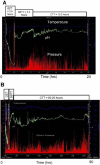Methods for the assessment of small-bowel and colonic transit
- PMID: 22293166
- PMCID: PMC3270312
- DOI: 10.1053/j.semnuclmed.2011.10.004
Methods for the assessment of small-bowel and colonic transit
Abstract
Transit assessment of the small intestine and colon is relevant in the study of physiology, pathophysiology, and pharmacodynamics, and there is increasing use of small-bowel and colonic transit measurements in clinical practice as well. The main methods that are applied in clinical practice are substrate-hydrogen breath tests for small-bowel transit and radiopaque markers for colonic transit. Over the past 2-3 decades, scintigraphy has become the preferred standard in research studies, particularly for studies of pathophysiology and pharmacodynamics. New approaches include experimental stable isotope measurement of orocecal transit and the recently approved method using a wireless motility capsule that is validated as an accurate measurement of small-bowel and colonic transit.
Copyright © 2012 Elsevier Inc. All rights reserved.
Figures




References
-
- Kerlin P, Zinsmeister A, Phillips S. Relationship of motility to flow of contents in the human small intestine. Gastroenterology. 1982;82:701–706. - PubMed
-
- Tremolaterra F, Villoria A, Serra J, et al. Intestinal tone and gas motion. Neurogastroenterol Motil. 2006;18:905–910. - PubMed
-
- Plavsic BM, Robinson AE, Jeffrey RB. Gastrointestinal Radiology. McGraw-Hill; New York, NY: 1992.
-
- Lönnerblad L. Transit time through small intestine: roentgenologic study on normal variability. Acta Radiologica - Supplementum. 1951;88:1–85. - PubMed
Publication types
MeSH terms
Grants and funding
LinkOut - more resources
Full Text Sources
Other Literature Sources
Miscellaneous

